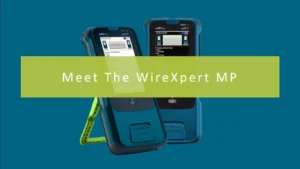Does Apple’s AR/VR Headset Have a Place in Pro AV Integrations and Experience Design?
Apple’s AR/VR headset is soon-to-release and will be hitting the markets in June 2023. With its unique features and Apple device compatibility, there are many predictions swimming around about the business use case possibilities of the product. Its most unique feature is that unlike many VR headsets that come with controllers, Apple’s “Reality Pro” will use both an external and internal sensor to allow users to control their AR/VR world with their hands and eyes. The potential capabilities of this headset are great, but is there a place for Apple’s AR/VR headset in the Pro AV industry?
In general, AR/VR hardware hasn’t found its rhythm for large-scale deployments; companies have deployed hardware for small-scale, intimate, and personal experiences. Trying to deploy AR/VR hardware for a whole museum tour, for example, is a different endeavor, especially when considering the cost of dozens if not hundreds of headsets.
One of the main challenges with Apple’s AR/VR headset that may hinder it from reaching those larger markets could be its hardware not being attractive or wearable enough to use in everyday life or to purchase in bulk on behalf of an organization or facility, preventing widespread adoption of the product. When Pro AV integrators and experience designers are weighing their next project, the larger the market and the larger the potential audience for their project, the better. Especially since experiential design projects are some of the AV industry’s best marketing opportunities, limiting the number of potential eyes and ears who can engage with the project in order to make it a VR-compatible integration isn’t a guaranteed wise choice.
Some in the AV industry see promise in VR integrations, highlighting the technology’s utility for immersive education, content marketing, and even assisting in the actual integration process. Chuck Espinoza, Global Education Director at Aurora Multimedia adds his perspective on the potential Apple’s AR/VR headset has in the Pro AV industry. Espinoza addresses the ways he could see the headset being incorporated into certain situations, but reiterates that it is unlikely Apple’s AR/VR headset will be right for the average AV install.
Chuck’s Thoughts
“AR and VR on a headset has traditionally not done well in the professional AV industry. What we do in professional AV is try and put a message out, we try and communicate electronically to massive people. This has been digital signage and just like the displays we use in conference rooms and things like that.
And you’re talking about executives going into using to use these rooms and, teachers teaching in these rooms. And people quite frankly, don’t want to put on glasses. And this has been a thing 3D came along in the home and people thought it would take off and it didn’t because people don’t want to put on glasses.
Google Glass did not take off, because people don’t want to put on glasses. And there are a lot of early adopters that used it and said, this is great, this is a wonderful thing. I personally use AR in the classroom. I’ve been using AR in the classroom for the last four or five years with an iPad, just wirelessly stream my iPad with views of the classroom, but then I can do things to cad out the classroom with AR. And that seems to have taken off, but still, I’m not using a headset, I’m actually broadcasting my AR up to a large screen. I think this might take off with kids, but I don’t know about the professional AV industry, and I know a lot of eSports players, the AR, graphics engines just aren’t there, these eSports players are trying to get 600 hertz refresh rates and AR is not gonna do it.
I’m curious to see what it does in an Apple ecosystem. I have an entire Apple ecosystem at home Macs, iPads, iPhones, iMacs, Apple TVs. So, I’m curious to see if this will hook up to my Apple ecosystem so I could just watch movies in bed. But as far as getting into the conference room, the boardroom, I don’t think it’s gonna happen.
Maybe in the classroom if we get some really creative instructors and some funding so that everyone in the class can have AR or if this is a distance education thing where we have different people using AR/VR in different locations on the globe, we can work collaboratively. But as far as the average ordinary, everyday AV PRO install, I don’t think it’s gonna go very far, I really don’t. I mean, my Oculus Rift is already end of life and it was only out for a few years.
Hardware has to be less hardwarey, for the lack of a better term. If you look at all the VR goggles right now, it looks like I’m getting ready to go scuba diving and this is not very friendly to the average user. Google Glass had the best kind of thing back a few years ago, it just had a little eyepiece, right?
When I think of good usable AR, good usable VR, I’m thinking Tony Stark when he had Friday in his glasses, and he just had glasses that looked like glasses. This is where it really needs to get if we’re going to make it part of our milieu, part of our everyday life. It can’t be this big thing that I put on my face, and I have to be able to see through the thing, so I don’t trip over the rumba or the kids on the way to the couch, right?
I have to be able to integrate this into life and to integrate this into life, I can’t have big antennas sticking up or big things on my face. It just has to look normal. So, I think AR and VR are gonna need to come, they’re gonna have to call up Donatella Versace and say, how do we look fashionable and still maintain that technological leap forward to what we want, of giving us information right into our eye holes without a screen, without hands on, it’s gotta look good. Cause if it doesn’t, I’m telling you, the people who are gonna buy these things and use these things, they’re not gonna walk around with Scuba Steve glasses.
If you have to personalize someone, personalize a piece of gear for someone, and that’s putting it on or touching it gets into a lot of weird feelings with people. Pre pandemic, I used a catch box quite a bit because it upped my audience engagement.
I throw it to somebody, they caught it, had fun, talked into it, they threw it to the next person. We played volleyball in the room with it instead of back and forth, we pitched it to each other. As soon as the pandemic hit, no one wanted to touch a thing that someone else touched, and I could see this being even more of an issue with AR and VR, like, I don’t know where those goggles have been. They have been on somebody’s face. I don’t know where their face has been. I don’t see them being a non-personal thing. Now, as far as a personal thing, I think, if I buy a set of goggles for my kids, they wear ’em. Hey, great, you know what? Kids are sticky.
But, as far as going to a museum and picking up a pair of goggles, I don’t think people are gonna adopt that. I really don’t. Just knowing human nature and where the world is now, we just got off the worst pandemic ever, people don’t even wanna shake hands. And so, it’s getting better, it is getting a lot better, people are starting to gather in groups and get back to life, and we’ve experienced this; what we can do at home and what we can do in a hybrid environment. But I still think putting on a peripheral to touch my skin is gonna be a long way from adoption.”
Article written by Gabrielle Bar









